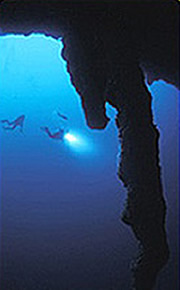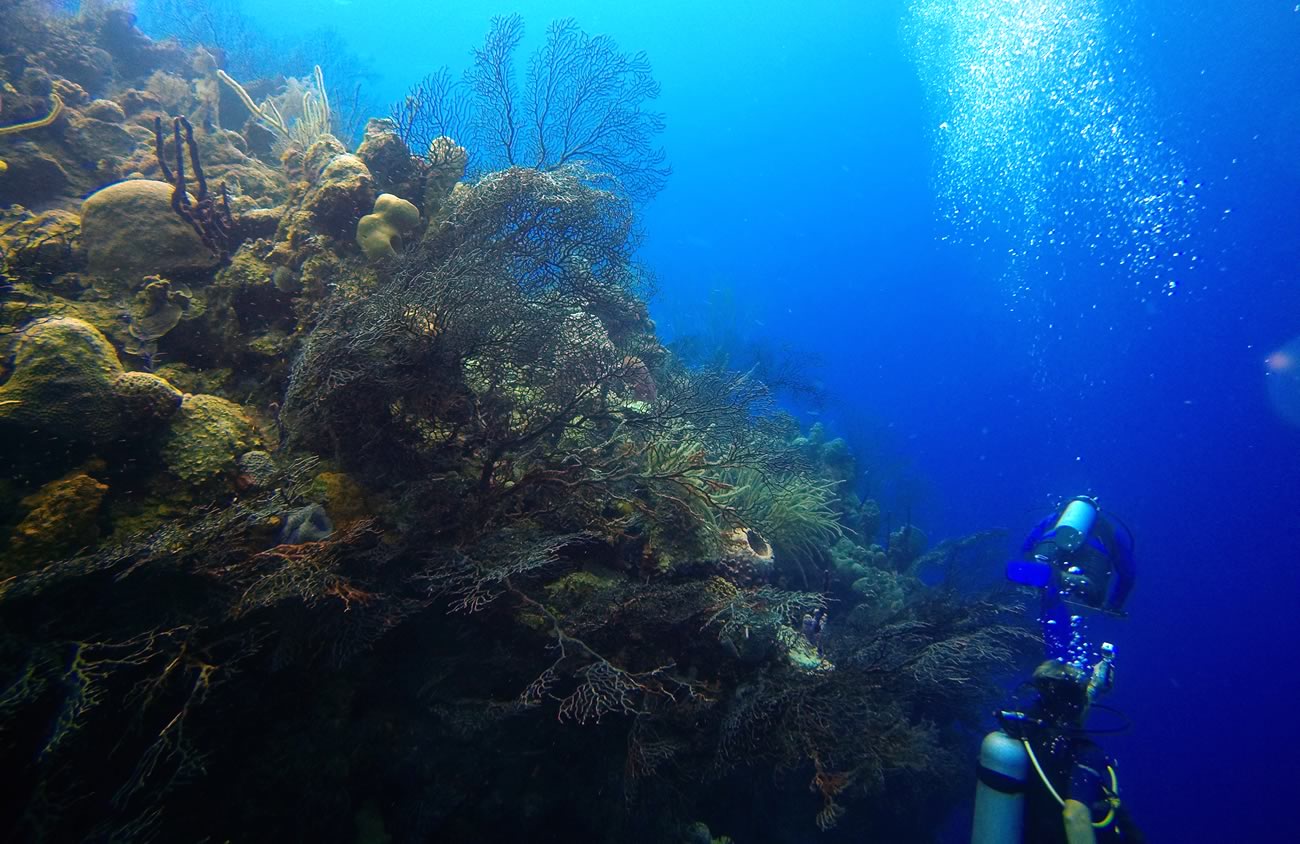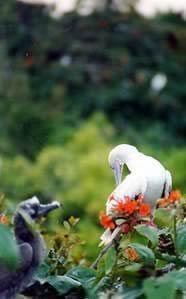The Blue Hole
Belize Blue Hole is located at Lighthouse Reef Atoll which is the furthest offshore of the three atolls outside the main barrier reef. This World Heritage Site is one of the most popular dive sites in the Caribbean. It was first made famous by The Jacques Cousteau’s Calypso Expeditions in the mid 1970.

With a depth of over 400 feet, the Blue Hole resembles a perfectly circular bottomless pit. The walls are sheer from the surface until a depth of approximately 110 feet where you will begin to encounter stalactite formations which actually angle back, allowing you to dive underneath monstrous overhangs. The temperature at 130ft is about 76F with hardly any change throughout the year at that depth. Hovering amongst the stalactites, you won’t help from feeling humbled by the knowledge that the massive formation before you once stood high and dry above the surface of the sea eons ago. The water is motionless and the visibility often approaches 200ft. Caribbean reef sharks have also taken up residency in the Blue Hole, creating more excitement for divers.
Lighthouse Reef Atoll
Besides The Great Blue Hole, Lighthouse Reef Atoll features many more world class dive sites including the Aquarium and Half-moon Caye Wall. The wall is a shallow drop-off beginning with huge nuggets of coral lying on a white sand bottom. A series of tunnels and swim-through that pierce the wall harbors schools of grouper and eagle rays.

Divers pass a large gorgonian sea fan while Diving Lighthouse Reef, off Half Moon Caye Wall, Belize
Cayes in the atoll
There are six cayes in the atoll. One of the two Sandbore Cayes in the north has a lighthouse occupied by a keeper and his family. Mangrove covers most of the island and there is an internal lagoon noted for saltwater crocodiles and snowy egrets.
The most popular caye at Lighthouse Reef Atoll is Half-moon Caye located at the southeast corner. The first marine reserve in Belize was established in this area in 1982. It encompasses 10,000 acres of the atoll and 15 square miles of surrounding waters. The area is divided into two very distinct ecosystems. In the western half it is densely vegetated. The soils are made rich and fertile by guano from thousands of sea birds nesting in the area. The eastern half by comparison is vegetated primarily by coconut palms and very little underbrush.
One of the principle inhabitants of the western side is the Red-footed Booby, numbering around 4000 breeding birds. The adult booby population found on the island is unusual in having an almost total predominance of the white color phase. The only other similar booby colony is on an island near Tobago. If you’re an experienced nature-watcher you’ll see many different kinds of birds and iguanas and minor wildlife. The caye is also a habitat for ninety eight species of other birds, these include warblers, ospreys, white-crowned pigeons and the magnificent frigate bird.
Day Trips
Day trips to The Great Blue Hole is available from most coastal and island destinations in Belize however, they are way more frequent from Ambergris Caye, Caye Caulker and the private island resorts at Lighthouse Reef and Turneffe Atoll. Bear this in mind if the Blue Hole is a priority on the list of tours you want to do when you visit Belize.
Rates for a day trip to the Blue Hole typically starts at $290USD per person, plus park fees of $40USD.